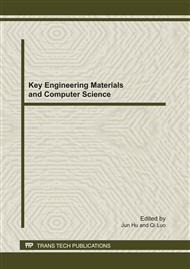p.140
p.146
p.151
p.156
p.163
p.170
p.176
p.180
p.185
An Investigation about the Effect of Depth of Cut on Surface Integrity in Creep Feed Grinding of INC 792-5A
Abstract:
Creep-Feed Grinding(CFG) is one of the none-traditional machining in which form grinding to full depth is performed in limited number of passes. One of the most significant criteria which is taken into account to display valid machining parameters, is surface integrity. Surface integrity in CFG process is influenced by four main factors including surface roughness, superficial micro-crack, burning and changes in micro-hardness. According to prior investigations in CFG process, depth of cut plays an important role in surface integrity. In this study, the influence of cutting depth on workpiece surface integrity of cast nickel-based superalloy with alummina wheels, was investigated. During this study, a sample part was machined with variable depth of cut while the other parameters were Constant. After machining, surface roughness of each specimen was measured and in order to investigate existence and dimensional situation of surface micro-cracks, Chemical Etch + FPI and Thermal shock + FPI were performed. For determining micro-structural changes in ground specimens as a clarifier criteria in measuring the level of residual stress, a set of recrystallization processes were carried out on them and average grain size were measured. The results show, however, changing in depth of cut hasn't influenced on micro-cracks, quality of surface roughness has descended in terms of increasing the cutting depth.
Info:
Periodical:
Pages:
163-169
Citation:
Online since:
August 2011
Authors:
Keywords:
Price:
Сopyright:
© 2011 Trans Tech Publications Ltd. All Rights Reserved
Share:
Citation:


